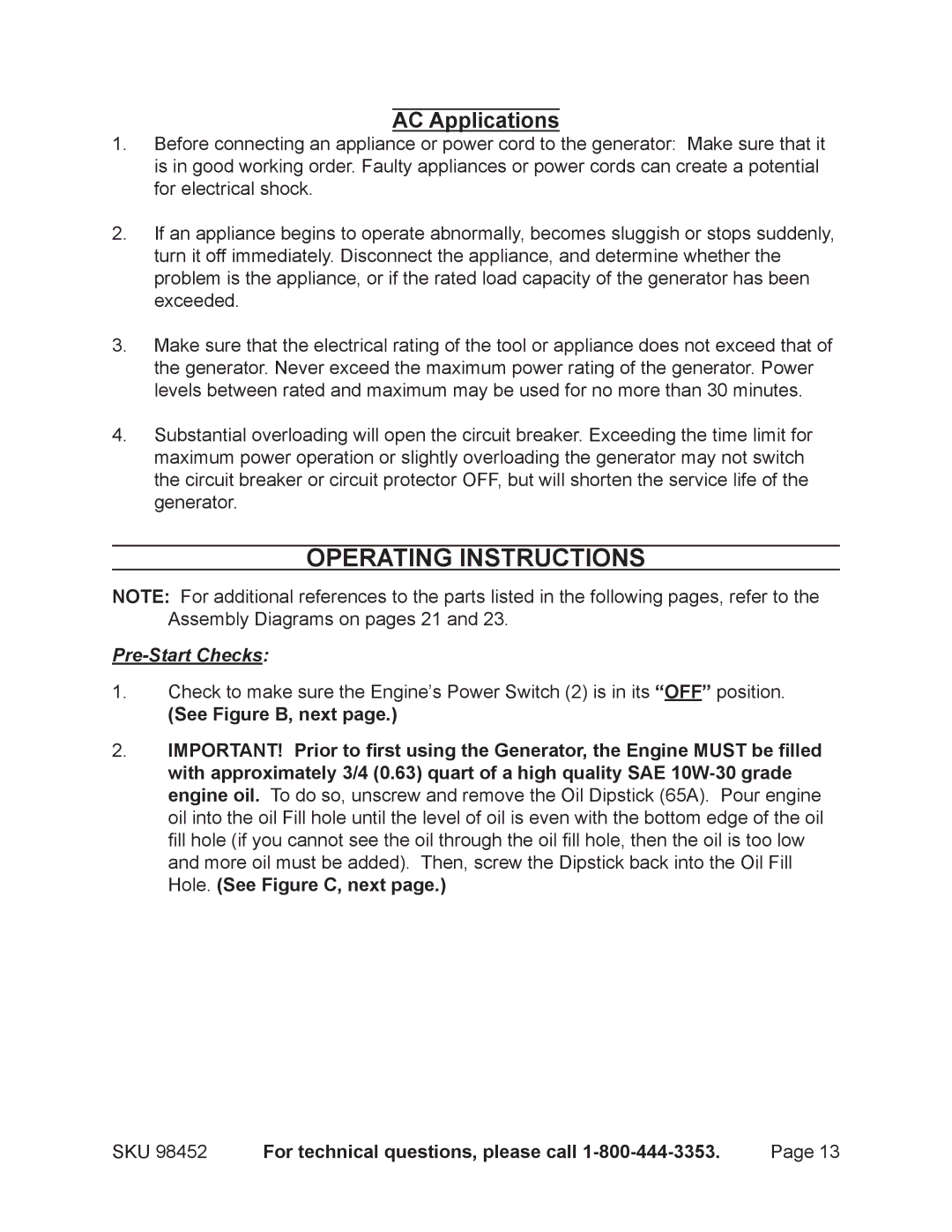98452 specifications
The Chicago Electric 98452 is a powerful and versatile tool designed for both professional and hobbyist woodworkers. This band saw stands out due to its robust build and a combination of innovative features that enhance usability and performance. With a 9-inch throat depth and a 12-inch cutting height, it offers significant capacity for a range of cutting applications, allowing users to tackle intricate curves and thick materials with ease.One of the key characteristics of the Chicago Electric 98452 is its strong 2.5-amp motor, which provides ample power to cut through different types of wood with precision. This motor supports variable speeds, enabling users to adjust the cutting speed according to the material's density. This flexibility is crucial for achieving accurate cuts, especially when working with softer woods or harder composites.
The saw features a lightweight and portable design, making it convenient for users who may need to move their equipment around a workshop or transport it to job sites. The solid steel frame ensures stability during operations, minimizing vibrations that can lead to inaccurate cuts. The base is sturdy and provides added safety, ensuring that the unit remains secure during use.
The Chicago Electric 98452 is equipped with a built-in work light that illuminates the cutting area, improving visibility for detailed work. Additionally, its adjustable blade guides assist in maintaining blade alignment, which is essential for achieving clean, precise cuts consistently.
Another significant advantage of the Chicago Electric 98452 is its ease of blade changes. The saw is designed with tool-free blade tension adjustment, allowing users to swap out blades quickly and without hassle. This feature saves time and ensures that users can keep the right blade engaged for their specific project needs.
Safety features are also a priority in the design of the Chicago Electric 98452. It includes a safety switch to prevent accidental start-ups and a blade guard that protects users from potential hazards.
Overall, the Chicago Electric 98452 band saw is an excellent choice for those seeking a reliable, powerful, and user-friendly tool. Its combination of impressive features, effective technologies, and thoughtful characteristics makes it a valuable addition to any woodworking arsenal, suitable for both novice and experienced woodworkers alike.

